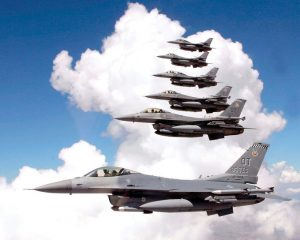US airlines are seeing profits return and betting that the rise of Delta variant of the coronavirus will not derail a domestic travel comeback even as it clouds the outlook for an international recovery.
Over the last week, three of the four biggest US carriers reported second-quarter profits, and while overall travel still lags pre-pandemic levels, far outpaces the anemic volumes of a year ago.
“Simply put, people are ready to travel again,” American Chief Executive Doug Parker and President Robert Isom said in a note to employees Thursday.
“The green flag has dropped, and we are well on our way toward recovery,” they said after announcing the company’s first profit since the start of the Covid-19 pandemic.
The positive earnings reports come amid concerns the United States could be on the cusp of yet another wave of the deadly virus.
Also read: Bad weather, wildfires’ smoke delay hundreds of flights at Denver Airport
US officials are warning of a “pandemic of the unvaccinated” as the Delta variant leads to sharp increases in infections in regions where vaccination rates are low.
But airline executives expressed confidence the rising cases will not mar the hot domestic travel market. However, they are concerned about the US labor shortage holding back their plans to recruit and ramp up operations.
“We have not seen any reduction or drop in demand looking out over the next one to 90 days, which is about as far our crystal ball can go right now,” Delta Air Lines Chief Executive Ed Bastian said last week. “We know our customers are largely vaccinated.”
Also read: US issues new travel advisory for India and Pakistan, urges caution while travelling
United Airlines Chief Executive Scott Kirby said bookings “continue to just get stronger and stronger every week.”
“We think the most likely outcome is that the continued recovery in demand continues largely unabated,” he said.
Less clear is the timeframe for a resumption of normal international travel, which remains heavily restricted by governments, including the United States which still has not opened up to travelers from Europe.
“Airlines warned in April that we were unlikely to see the summer travel season to Europe,” said Peter McNally, an analyst at Third Bridge. “It’s tricky what’s going on in Europe with the Delta variant.”
American posted a $19 million profit during the quarter, a big improvement on the $2.1 billion loss in the same period of last year. The results were boosted by $1.4 billion in governments funds to keep airline employees on payroll.
Revenues rose to $7.5 billion, nearly five times what it was a year earlier, as the carrier had 44 million passenger trips in the latest three months.
The recovery has been led by domestic leisure travel, but the airline is starting to see more business travel bookings, an especially lucrative segment.
Business travel in the second quarter rose to 44 percent of the 2019 levels, compared with 22 percent in the first quarter, Parker told CNBC.
American projects a complete recovery to domestic business travel in 2022, with the international comeback later.
The airline already has brought back 3,000 employees from leave, with thousands more flight attendants due to return this fall. American also plans to hire 3,500 new employees throughout operations, plus some 1,350 new pilots and 800 new flight attendants over the next year.
Other leading US carriers reported similar revenue trends and are bringing back workers and recruiting new employees, following an exodus of experienced staff who were given incentives to leave the airlines while they were in belt-tightening mode during the darkest days of the pandemic.
But Southwest Airlines Chief Executive Gary Kelly cautioned that finding workers is not so easy right now.
“My concern right now is hiring and staffing going forward,” Kelly told CNBC. “It’s a very tight labor market.”
Kelly said Southwest, which on Thursday reported second-quarter profits of $348 million, also may need more new planes after announcing plans in March to buy 100 Boeing aircraft, Kelly said.
Last month, United announced the biggest new plane order since the pandemic when it agreed to acquire 270 new planes from Boeing and Airbus — the largest order in the carrier’s history.
“The prior 12 or 15 months had been about raising capital, keeping liquidity, burning cash. Now, the companies are actually investing,” said McNally.
But worker shortages looms as a risk.
“There are these bottlenecks, some of them are short term and some of them maybe a bit more persistent like pilots and maintenance,” McNally said. “That can trip up the recovery.”
Shares of American fell 1.2 percent in afternoon trading to $21.14, while Southwest dropped 3.0 percent to $51.56.






